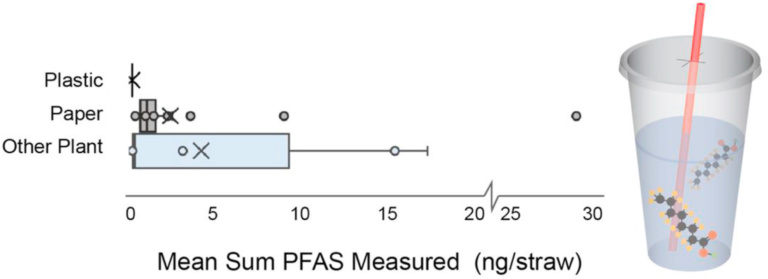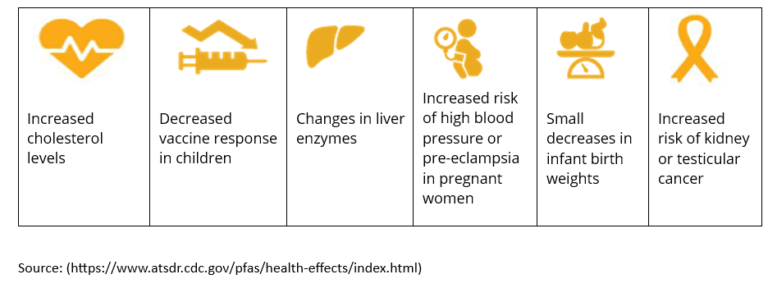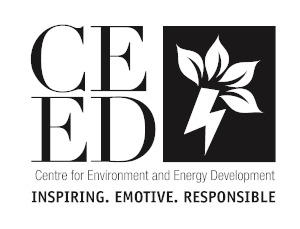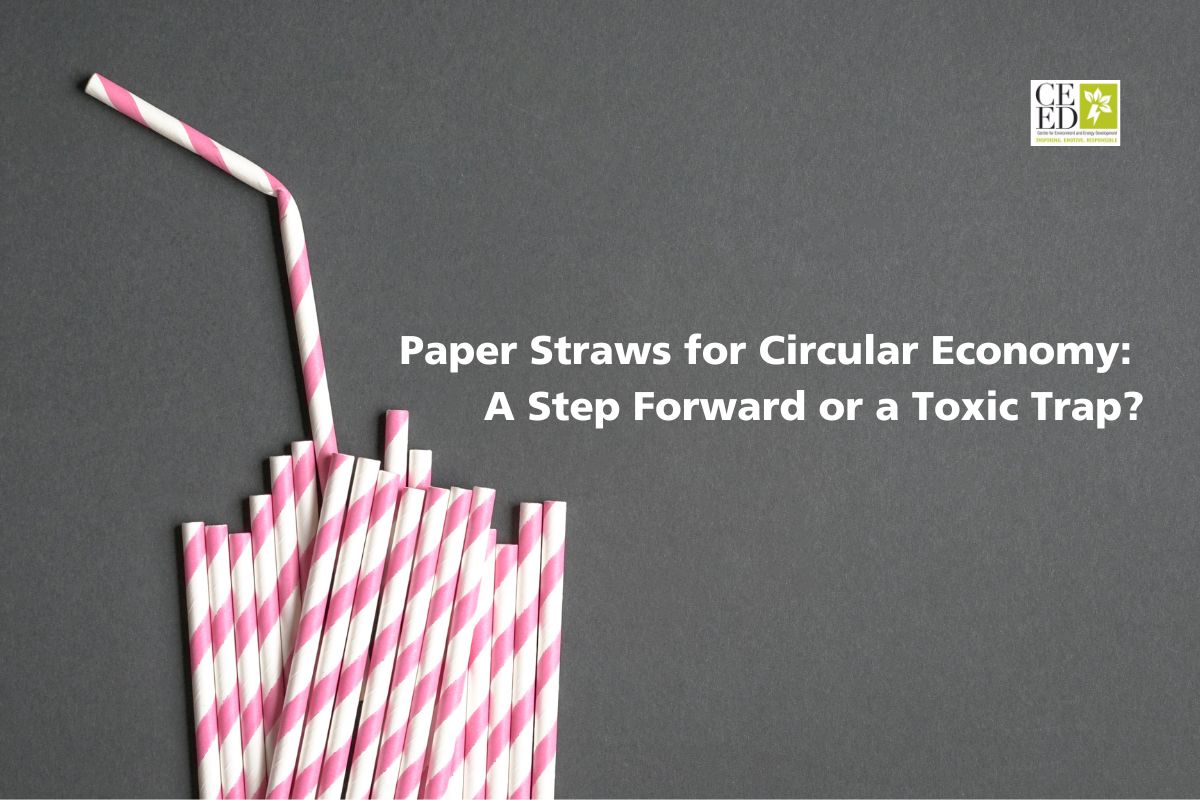Niva Mishra | Manish Kumar |
Discovering plastic substitutions and alternatives has become more urgent since plastic pollution has become a global concern in recent years. But it’s critical to thoroughly assess how plastic alternatives will affect society and the environment. It’s crucial to remember that not all alternatives are environmentally benign, even while initiatives to replace plastics with natural and sustainable materials are gaining steam. Thus, it is essential to carry out a typical life cycle analysis (LCA) to evaluate the impact and viability of alternative replacements.
In a recent study published in Chemosphere by Timshina et al. 2021, per- and poly-fluoroalkyl substances (PFAS) are found to be present in straws manufactured from plant-based materials. People who use these straws while drinking may consume an amount of PFAS that has not yet been quantified. Significant quantities of PFAS have not only been reported but have been found in human serum, environmental matrices, and other matrices, the study reports.

Source: Timshina et al., 2021, Chemosphere, Volume 277, 130238 (https://doi.org/10.1016/j.chemosphere.2021.130238)
When the world is shifting to plant-based products as an ancillary to plastic, researchers have found that paper straws are more likely to contain PFAS than other types of straws. This also holds true for drinking straws, as straws made of plants and other ostensibly eco-friendly materials are utilized more frequently to lessen plastic pollution. PFAS are added during manufacture to make these materials water-repellent, but they can also be present earlier in the supply chain due to the usage of contaminated raw materials. Market offers several brands of straws produced from the following five materials: paper, bamboo, glass, stainless steel, and plastic. With the exception of stainless-steel straws, practically all varieties of straws were confirmed to contain PFAS. More often than not, PFAS were found in plant-based materials including paper and bamboo. Few distinctions between the various materials or their regions of origin were found. The presence of PFAS in plant-based straws demonstrates that they are not always biodegradable and that using them may increase PFAS exposure in both humans and the environment. Paper straw reportedly costs more to make than other materials. It reportedly emits more greenhouse gases (GHGs) and uses over four times the energy. So, it may not be that sustainable after all.

Poly- and perfluoroalkyl substances (PFAS), a class of synthetic contaminants with a reputation for being potentially toxic for wildlife, people, and the environment, are present in a large number of food contact materials (FCMs) and reusable plastics used in the food industry. It’s possible for PFAS to go from FCMs into human meals. Paper and other plant-based materials are frequently employed in business settings in place of plastics. Numerous research studies have looked into potential connections between per- and poly-fluoroalkyl substances (PFAS) blood levels and adverse health effects in people. These researches did not all, however, use the same PFAS, exposure types, or participant categories. Thus, a range of health outcomes were reported in these various investigations. According to human research, exposure to specific PFAS at high concentrations may cause the following:

Currently, it is unspecified what percentage of the total PFAS concentration in plant-based FCMs has been purposefully added to the product and what percentage is a background concentration as a result of recycling processes. The presence of unintentionally added PFAS may result from the use of contaminated recycled paper fibres in the manufacture of new FCMs, contamination of the raw materials, or contamination of the processing water. The use of biosolids as fertilizer in agriculture is another cause of this pollution. When plants utilized in the manufacturing process are cultivated on polluted soils, the PFAS they absorb can eventually wind up in FCMs. It is challenging to quantify potential background contamination due to its complexity and variety in identifying the precise source of the PFAS found in drinking straws. Because they may contribute to the present, serious PFAS pollution problems, plant-based straws, which are touted as eco-friendly alternatives, are not always more sustainable for the environment than plastic ones. Despite the fact that plant-based FCMs, especially those made of paper, are intended to be recyclable, they are more likely to end up in landfills or be burned, which releases PFAS into the environment.
Because PFAS affect people and animals differently, not all of the consequences shown in animals may also be present in humans. The exposure and consequences in animals can be compared to what they would be in people using methods developed by scientists. Our knowledge of the connection between PFAS exposure and adverse effects on human health may alter as a result of further study.
In light of the article’s findings regarding the presence of PFAS in plant-based straws and the environmental considerations tied to plastic alternatives, a comprehensive plan of action emerges. It begins with conducting in-depth Life Cycle Analyses (LCAs) for alternative materials, ensuring a clear understanding of their environmental impacts. Simultaneously, research and development efforts should prioritize the identification and creation of safer, more sustainable materials, and regulations must be established to govern their use. To keep consumers informed, educational initiatives should be implemented, shedding light on both the benefits and drawbacks of alternative materials. Additionally, enhanced recycling and waste management systems can help prevent PFAS-contaminated plant-based materials, particularly paper, from entering landfills or incineration, thus reducing environmental harm. Supply chain transparency, tracing raw material sources and ensuring responsible sourcing, play a crucial role in quality control. Furthermore, continuous research into the health effects of PFAS exposure in humans and animals is imperative. The creation of certification programs for safe materials can provide consumers and businesses with guidance while fostering collaboration between governments, industry stakeholders, and environmental organizations is essential for effective problem-solving. Lastly, innovation and adaptation in materials development are necessary to strike a balance between sustainability and safety, ensuring that plastic alternatives do not inadvertently harm the environment or human health.


